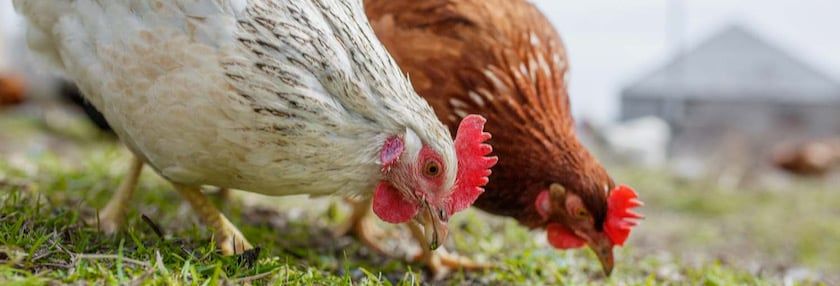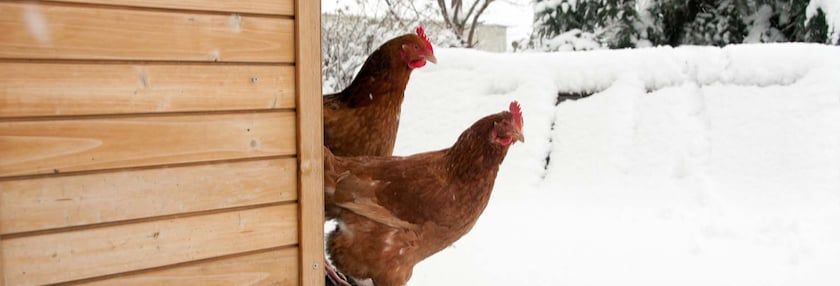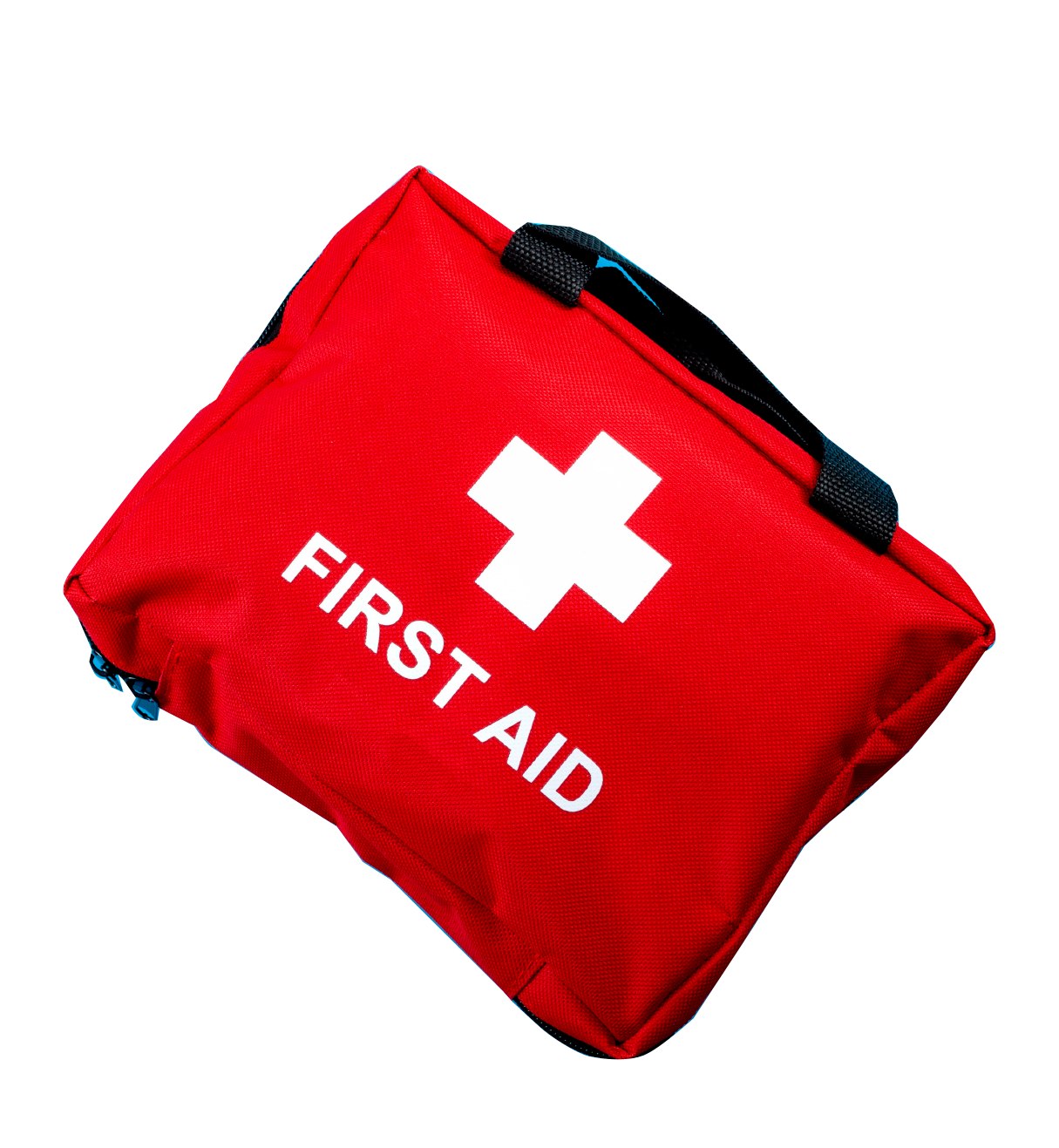Rethinking Molting and Molt Nutrition


Molting is natural, but can you help?
It’s that time of year when many birds will start shedding old feathers and replacing them with new ones. When it comes to the topic of molting, most online articles and blog posts focus solely on replacing feathers. It’s true that over time feathers become damaged and need to be replaced. Also, that feathers are made of keratin, a fibrous structural protein.
It also seems like many blogs say to feed molting hens a high protein diet because it takes so much protein to replace their feathers. They advocate for 18%, 20%, or even higher protein diets. Many recommend broiler diets or even fish or cat food.
Is that good advice or not?
There’s a lot more going on during molt than feather replacement, and protein isn’t the only nutritional factor to consider.
Why does molt happen?
Molting is a natural process that is triggered by environmental or nutritional cues. Egg production is hard work, especially for high-producing strains or birds given high quality layer feed. During a molt, the reproductive tract regresses and feathers are lost. Following a molt, the reproductive tract is rejuvenated leading to improved egg production and eggshell quality.
You can think of the molt like a vacation, a time for your hens to take a break and get revitalized before going back to work.
In addition to improved egg production, research shows that molted hens have significantly higher livability than those that were not molted. Although molting provides many benefits and naturally occurs in hens, it does involve many physiological and behavioral changes that are important to understand.
While it does take nutrients and energy to complete the restoration process, do birds need high protein molt diets? No.
In fact, ideal molt diets are low in protein, energy, and calcium, while ideal resting diets—transitional diets between the cessation of laying and return of a laying diet—are low in protein and high in energy.
These types of diets have been extensively tested at over 40 North Carolina Layer Performance and Management Tests at North Carolina State University These large-scale experiments have been conducted since 1958 and have evaluated dozens of different strains and production systems.
Experiment after experiment has demonstrated that hens don’t need a 20% broiler diet or cat food to come out of molt healthier and more productive.
How molt changes feed needs
Molt diets are designed to provide nutrition for body maintenance only. This allows for loss of up to 20% of body weight and helps the hen focus all her energy and resources on rejuvenation of her reproductive tract and feather coat.
Yes, loss of body weight up to 20% is normal and there’s no need to try to overfeed a hen because she is eating less or losing weight. In fact, that would be counterproductive.
A resting diet has increased energy and a more normal level of calcium than a molt diet and is designed to prevent further weight loss; maintaining body weight, but not egg production. Both diets have less than 12% protein.
There really aren’t any options in the bagged feed market for molt or resting diets.
It would just be too inefficient to produce them on a commercial scale because there wouldn’t be high enough year-round demand.
While a resting diet looks somewhat like a regular backyard layer feed (except with low protein), the ideal low energy molt diet has much closer to 1% calcium, so a 12% All Stock feed would approximate it (even thought the protein would be high).
Can you induce molt?
Research published by Dr. Carl Parsons at the University of Illinois at Urbana-Champaign examined various “nonfeed removal methods” for molting programs. In other words, diets that would induce a molt without starvation or anorexia.
They found that a molt diet high in wheat middlings resulted in good ovary and oviduct regression (87% and 55% reductions in weight, respectively) and reduced egg production to less than 10%. Prior to the molt diet being fed, hens were laying around 60% and the molt diets were fed for 4 weeks.
After 4 weeks, hens were switched back to a layer diet and egg production increased, peaking 8 to 12 weeks later at close to 85%. Egg production stayed over 60% (the pre-molt level) for over 40 weeks post-molt.
Look at your feed ingredients
Even though you probably won’t find a bagged “molt diet” available, there are some readily available feeds that may work.

Dr. Parson’s wheat middlings diet is reasonably similar to a 14% All Stock or beef cattle diet. The only (minor) concern with All Stock diets is that there may not be any copper added. A chicken’s copper requirement is fairly low (~8 ppm), so it shouldn’t really be a problem if birds have access to pasture where plants, insects, and other nutrient sources are available.
In fact, many All Stock formulas will have sufficient background copper from the major ingredients such as wheat middlings, soybean hulls, etc.
Alfalfa has also been shown to help in a molt diet and to improve immune function and bone parameters during the molt. In fact, a good molt can be induced by feeding 90% alfalfa pellets and 10% layer ration.
If you really feel the need to offer a protein supplement, alfalfa pellets are a much better choice than fish or pet food.
The rest that revives
Backyard flock owners should consider whether an induced or “encouraged” molt would be a good idea for their homestead or farm.
There are many benefits to molting, and the 2 or 3 months of lower egg production are certainly worth it when you look at potentially peaking over 40% e for a long 2nd or 3rd cycle. Twelve or 14% All Stock or Cattle Feed or even a high-alfalfa rabbit feed should induce a molt.
It is really up to you to decide whether your egg production has dropped so low that your birds need a boost (induced molt) or to just give a helping hand when they molt naturally. Inducing a molt may be more beneficial for those that sell eggs, because the economic benefits can be huge.
For others, 60% egg production may still provide plenty for their family and friends. But even in the case of a natural molt, low energy molt feeds may help speed it along and ensure more complete regression and rejuvenation of the ovary and oviduct.
Tags:Healthy Flock

Chicken Whisperer is part of the Catalyst Communications Network publication family.












